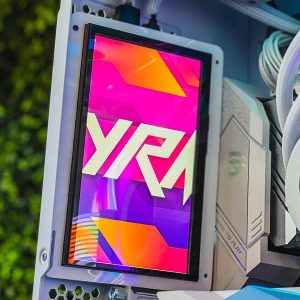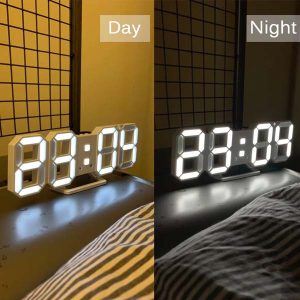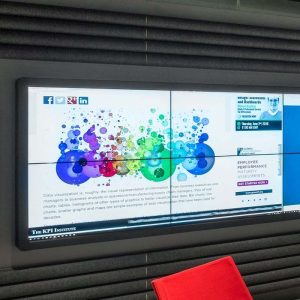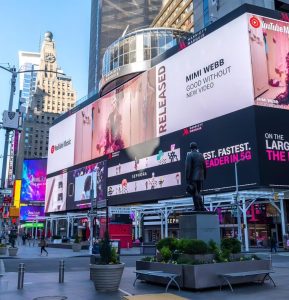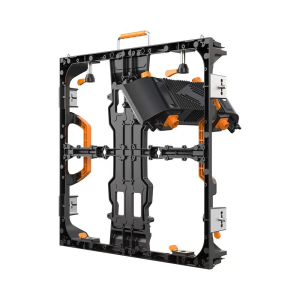Cube LED screens have quickly become a preferred choice for businesses and event organizers seeking innovative and engaging display solutions. Offering 360-degree visibility and immersive visuals, cube LED screens are ideal for retail spaces, exhibitions, and interactive public installations. However, to fully benefit from this cutting-edge technology, it’s essential to understand the unique aspects of their installation, maintenance, and distinctive features.
For more detailed information, specifications, and product options, check out our cube LED screens here.
1. Installation of Cube LED Screens: Tips for a Seamless Setup
Proper installation of a cube LED screen is essential for both functionality and safety, especially as these screens are typically placed in high-traffic areas. Here are some key considerations for a smooth and effective installation:
a) Structural Requirements
Cube LED screens require a sturdy support structure to ensure stability. Since these screens are often suspended or mounted at eye level, the supporting framework must be capable of securely holding the weight and dimensions of the cube. Working with experienced installers familiar with LED screen setups can ensure compliance with local safety codes and optimal positioning for maximum visibility.
b) Accessibility
Since cube LED screens may require periodic maintenance, accessibility is a crucial factor during installation. Consider placing the screen where it can be easily reached for maintenance tasks like screen calibration, cleaning, or component repairs. Designs that allow quick access to individual panels or modules are especially beneficial, as they reduce the time and labor required for maintenance.
c) Cable Management and Power Supply
Proper cable management is necessary to prevent any tangling or obstruction around the screen. The power supply should be routed in a way that minimizes visible cabling, maintaining a clean and professional look. Ensure that power sources are stable and that the installation area has adequate power capacity to handle the LED screen’s requirements.
d) Content Management Systems
To make the most of a cube LED screen’s multi-sided display, an advanced content management system (CMS) is often required. A CMS allows you to synchronize or differentiate content on each side of the cube, giving you full creative control over the display. Some CMS options offer remote access, which is especially helpful for managing content across multiple screens from a single location.
2. Maintenance of Cube LED Screens: Ensuring Longevity and Quality
Like any high-tech display equipment, cube LED screens require regular maintenance to ensure their longevity and optimal performance. A proactive maintenance schedule can prevent minor issues from becoming costly repairs and extend the life of the screen.
a) Regular Cleaning
Dust, dirt, and fingerprints can accumulate on the LED panels, affecting image clarity and brightness. Regular cleaning with a soft, dry cloth or specialized LED screen cleaner helps maintain optimal brightness and color accuracy. It’s important to avoid harsh chemicals that could damage the screen surface.
b) Module Inspections and Repairs
LED cubes are composed of individual modules that occasionally need checking for any pixel issues, uneven brightness, or color inconsistencies. Periodic inspections help identify faulty modules early. In the case of a malfunctioning module, cube LED screens are typically designed for easy replacement, allowing you to swap out damaged sections without dismantling the entire structure.
c) Calibration
Color and brightness calibration ensures that each face of the cube LED screen maintains consistent image quality. Regular calibration is particularly crucial for installations in high-use environments. Some screens feature auto-calibration technology, which adjusts brightness and color levels automatically, further simplifying maintenance.
d) Cooling System Check
LED screens generate heat, and an effective cooling system is essential to maintain performance. Most cube LED screens have built-in ventilation or cooling systems, but it’s important to ensure these remain unobstructed and functional. Periodically checking cooling systems helps prevent overheating, which can cause premature wear on the screen’s electronic components.
3. Key Features of Cube LED Screens: Unique Advantages for Diverse Applications
Cube LED screens bring several unique features that make them stand out in the display technology market. Understanding these features can help you leverage their full potential for your specific application.
a) 360-Degree Visual Experience
One of the defining features of cube LED screens is their multi-sided display capability. Unlike traditional flat screens, cube LEDs offer a 360-degree viewing experience, allowing audiences to view content from multiple angles. This feature is ideal for high-traffic spaces like retail stores or trade shows, where audiences constantly move around the display.
b) Customizable Size and Resolution
Cube LED screens are available in various sizes and resolutions, making them adaptable to different environments. Whether you need a small, eye-catching display for a boutique setting or a large, immersive installation for an exhibition hall, cube LED screens can be customized to fit the specific visual and spatial requirements.
c) Durability and Adaptability
Built with high-quality materials, cube LED screens are designed to withstand both indoor and outdoor conditions. Their durability makes them suitable for long-term installations, and some models are built with weatherproof casings for added protection in outdoor environments. This adaptability allows them to perform well in a range of settings without compromising quality.
d) Advanced Content Control
Cube LED screens offer impressive control over displayed content. With a compatible CMS, users can synchronize content across all sides of the cube or display different visuals on each face. This flexibility enables creative content arrangements that can be tailored for specific events, brand messaging, or interactive experiences. Advanced options include scheduling content rotation or integrating interactive features for enhanced audience engagement.
e) Energy Efficiency
Despite their powerful display capabilities, cube LED screens are often designed with energy-efficient components, which help reduce overall power consumption. Many screens feature low-energy LEDs that consume minimal power while delivering high brightness, which is especially beneficial for companies prioritizing sustainability in their operations.
Conclusion: The Benefits of Cube LED Screens for Long-Term Use
Cube LED screens are more than just a visual attraction; they’re a robust and versatile solution for delivering high-impact displays in various professional and public environments. Their unique installation requirements, maintenance needs, and standout features make them a worthwhile investment for those looking to make a lasting impression.
For businesses interested in creating an immersive and memorable visual experience, cube LED screens offer a range of possibilities. By following best practices in installation and maintenance, you can ensure these screens perform optimally over time, providing a reliable and eye-catching display solution.
Learn more about our selection of cube LED screens, including detailed specifications and installation options, on our product page here.

